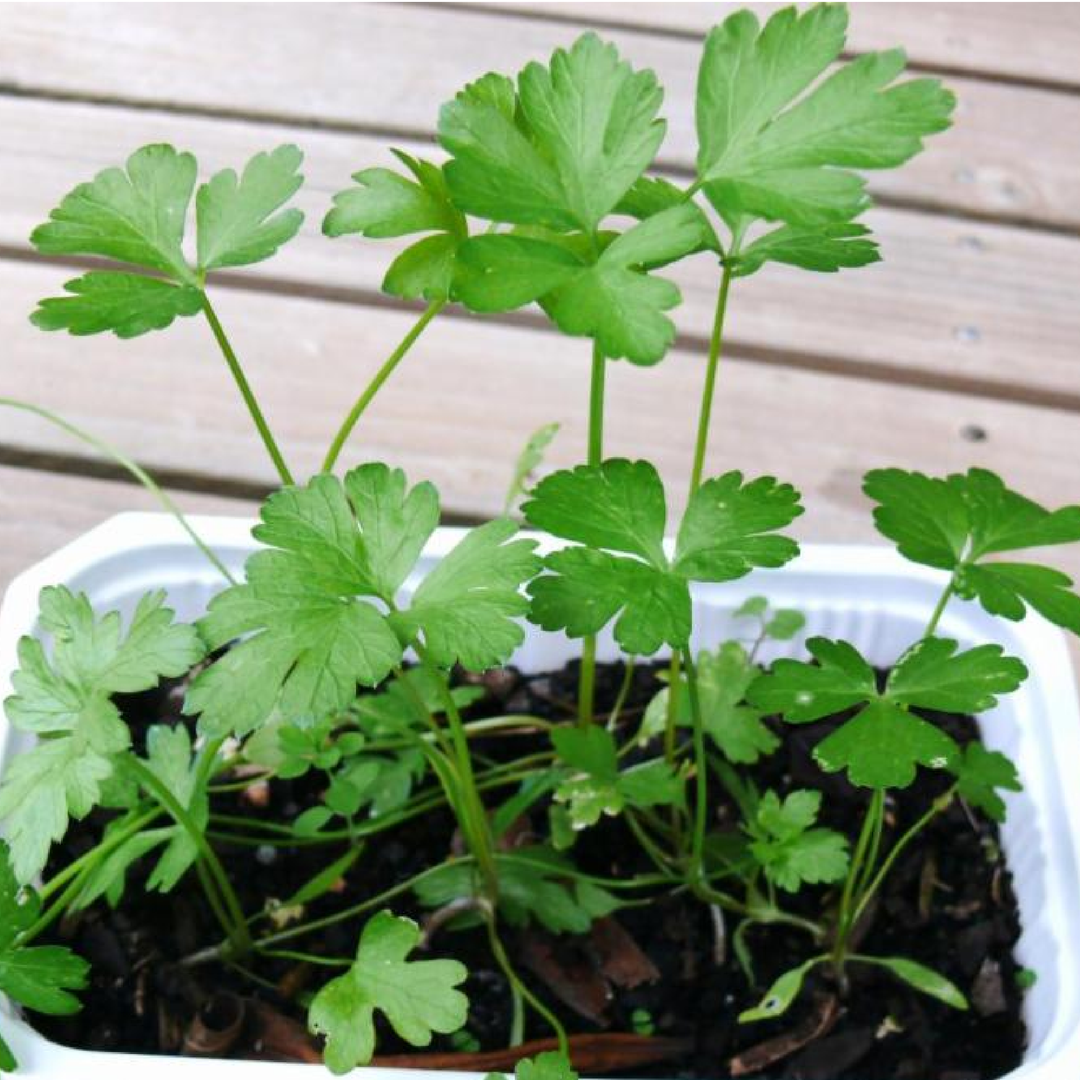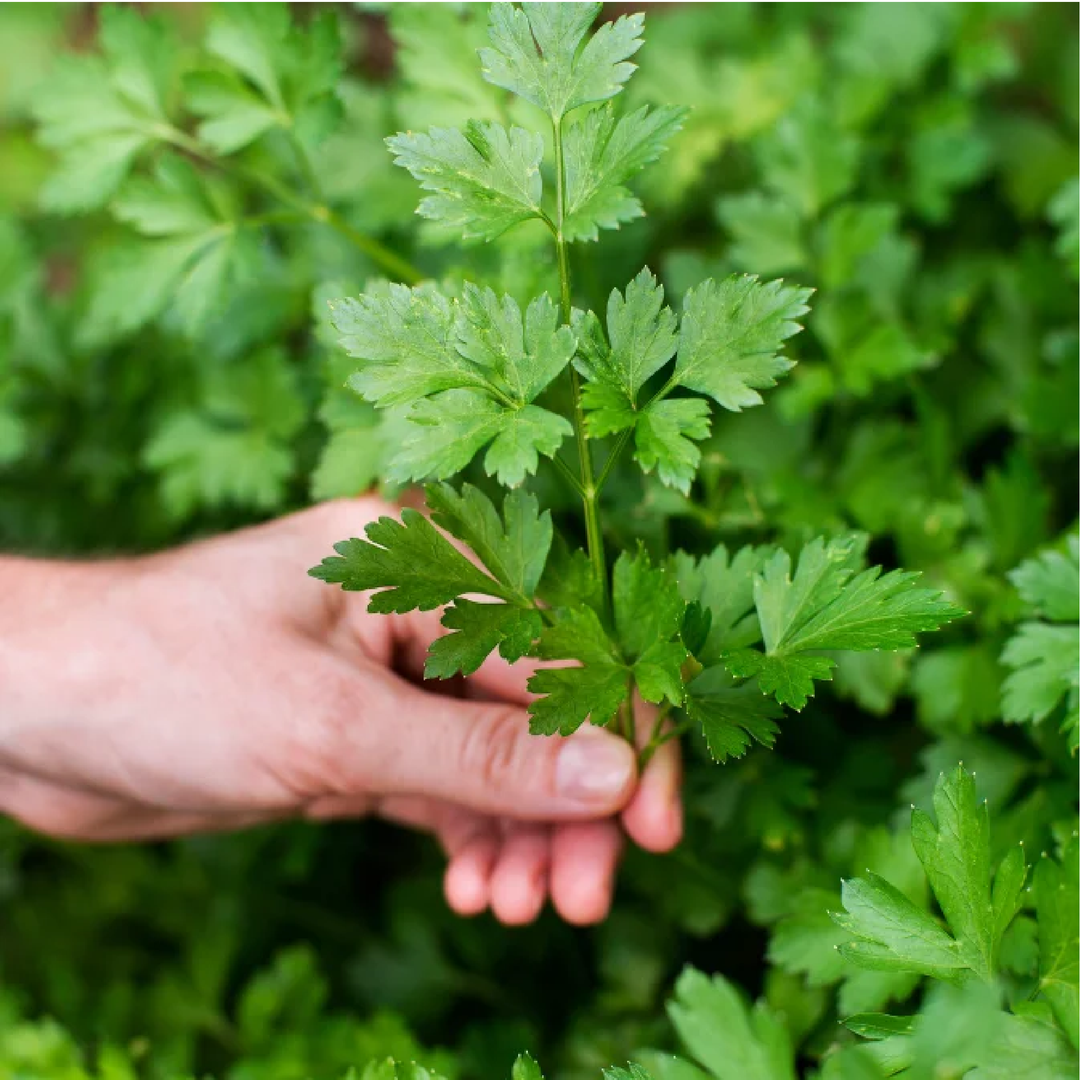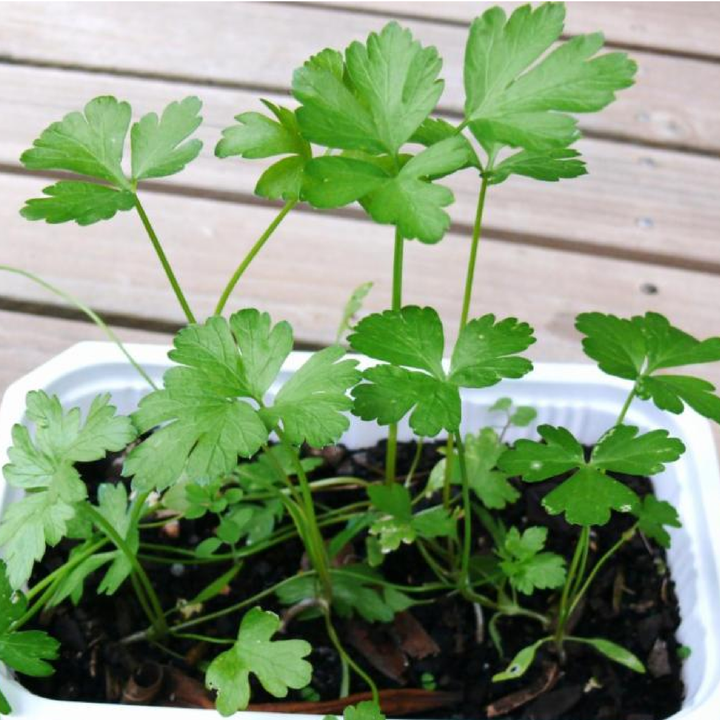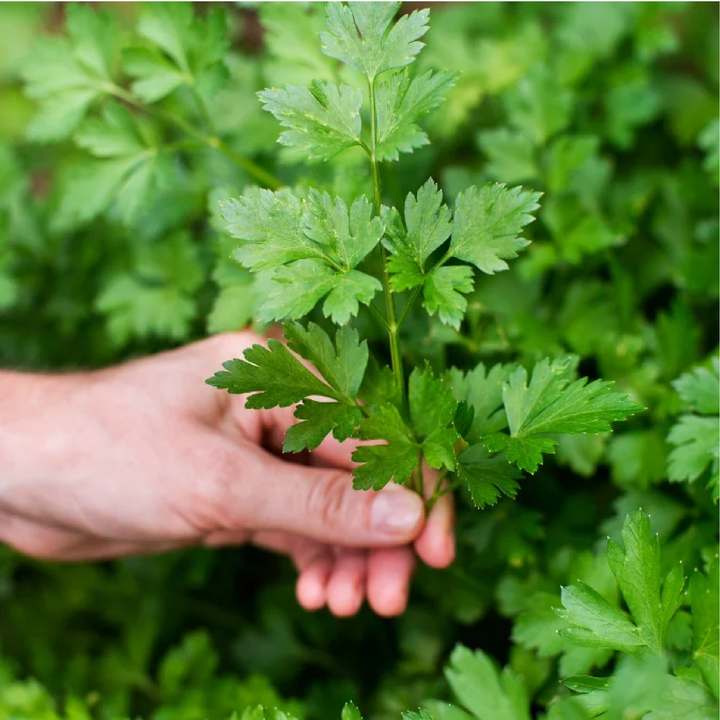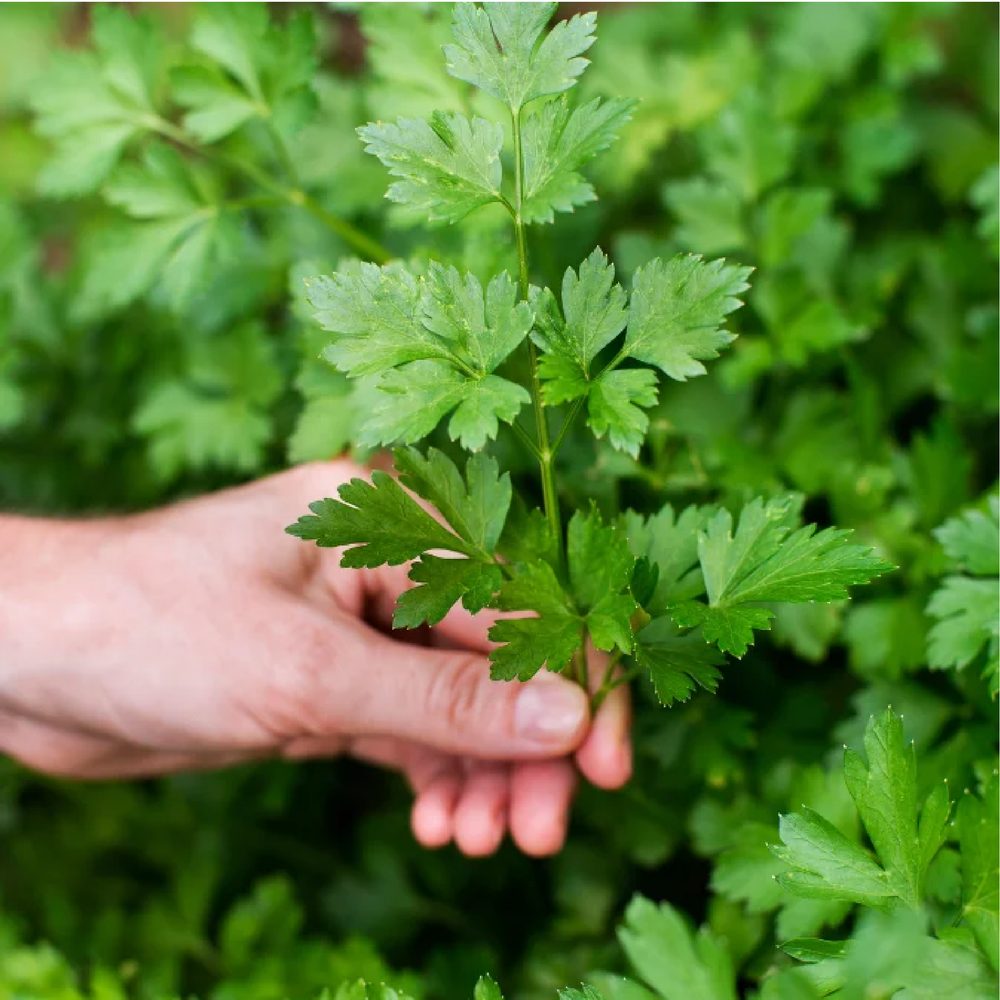PARSLEY SEEDS
بذور البقدونس
- Shipping all over U.A.E
- Low stock - 3 items left
- Backordered, shipping soon
Planting Parsley Seeds
- Timing: Parsley seeds can be started indoors 6-8 weeks before the last frost or sown directly in the garden after the danger of frost has passed. Parsley is a biennial plant, but it is often grown as an annual.
- Seed Preparation: Parsley seeds have a hard outer shell and can be slow to germinate. To speed up germination, soak the seeds in warm water for 12-24 hours before planting.
- Planting Depth: Plant parsley seeds about ¼ inch (0.6 cm) deep. Cover them lightly with soil, as they need some light to germinate.
- Spacing: Thin or transplant seedlings to about 6-8 inches apart in rows spaced 12-18 inches apart. This gives the plants plenty of room to grow.
- Container Option: Parsley can also be grown in containers. Choose a pot that is at least 10-12 inches deep to accommodate the plant’s taproot.
Growing Conditions
- Light: Parsley grows best in full sun, which means at least 6 hours of sunlight per day. However, it can tolerate partial shade, especially in hot climates.
- Germination Time: Parsley seeds are slow to germinate, usually taking 14-28 days. Be patient, as cooler temperatures or improper care can extend germination time.
Watering
- Consistent Moisture: Parsley likes consistently moist soil. Water the plants regularly, ensuring that the soil remains evenly damp but not soggy.
- Mulching: Adding a layer of mulch around the plants can help maintain soil moisture, regulate temperature, and reduce weed growth.
Temperature
- Optimal Growing Temperature: Parsley thrives in cooler temperatures between 60°F and 70°F (15°C to 21°C).
- Hardiness: Parsley is fairly hardy and can tolerate light frost. In USDA zones 5-9, parsley can often survive mild winters or grow back in the spring. In hot climates, afternoon shade may be necessary to protect the plant from excessive heat.
Soil Requirements
- Type: Parsley prefers rich, well-draining soil with a pH range of 6.0 to 7.0.
- Soil Preparation: Before planting, work compost or organic matter into the soil to improve fertility and drainage. Parsley thrives in nutrient-rich soil, so a well-prepared garden bed is essential for healthy growth.
- Container Soil: If growing parsley in containers, use high-quality potting soil that retains moisture while allowing for adequate drainage.
Caring for Parsley
- Fertilizing: Parsley is a light feeder, but you can boost its growth with a balanced fertilizer (such as 10-10-10) or by adding compost to the soil every 4-6 weeks. Avoid over-fertilizing, as this can reduce the flavor of the leaves.
- Pruning and Harvesting: Harvest parsley leaves regularly to encourage new growth. Snip off the outer leaves at the base of the plant, allowing the inner leaves to continue growing. Regular pruning will prevent the plant from becoming leggy or going to seed too early.
- Pests and Diseases: Parsley is relatively pest-resistant, but it can be affected by aphids, spider mites, and caterpillars. If you notice any of these pests, use organic insecticidal soap or neem oil to treat the problem. Watch out for fungal diseases like powdery mildew in humid conditions. Ensure good air circulation by spacing plants properly.
Watering Needs
- Regular Watering: Keep the soil consistently moist, especially during dry periods. Water parsley deeply, ensuring that the moisture reaches the plant’s deep taproot.
- Avoid Overwatering: While parsley likes moist soil, waterlogging should be avoided. Ensure the soil has good drainage to prevent root rot or other moisture-related issues.
If you looking for a affordable range of seeds. Visit our online store
What we offer in this Package: 1g Parsley Seeds
Thank you for shopping with us! We aim to deliver your order as quickly and safely as possible.
- Processing Time: Orders are processed within 1-2 business days.
- Shipping Time: Delivery usually takes 3-5 business days, depending on your location.
- Tracking: Once your order is shipped, you’ll receive a tracking number via email to monitor your shipment.
- Shipping Costs: Shipping fees will be calculated at checkout based on your location and order size.
- Delays: Please note that during holidays or high-demand periods, there may be slight delays.
If you have any questions about your order, feel free to contact our support team. We’re here to help!


